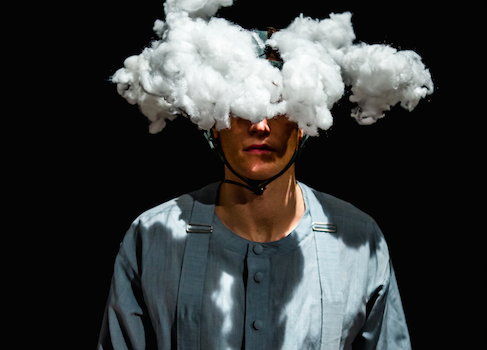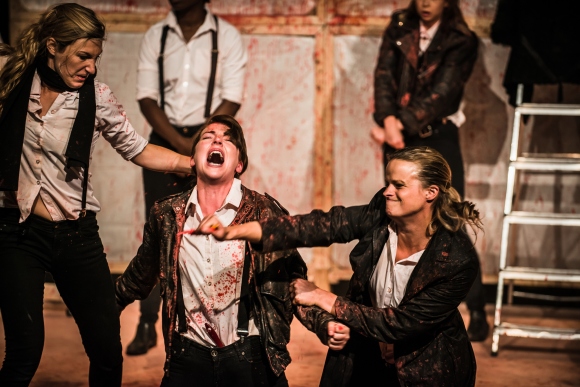Written and originally hosted at FringeReview. Link: Written and originally hosted at FringeReview. Link:
Les Enfants Terribles introduces you to a plethora of make-believe beasts, presented by a travelling band of vagabonds. 2015 marks Les Enfants Terribles’ 14th consecutive Edinburgh Fringe Festival.
Les Enfants draws in the usual crowd of young artists and families who expect a bit more from their children’s theatre – and, as usual, deliver precisely that. Dr Longitude (Maxwell Tyler) has travelled the world with the intentions of filling up his travelling menagerie with never before seen (or heard of) animals, but on his travels he also manages to assemble an unlikely band of anti-heroes, each one as loveable and hopeless as the last.
The end on Pleasance Beyond stage is transformed into a moving musical mounted float, complete with flashing brake lights, and thinly guised Fringe-themed irony. A soundscape of undecipherable animal noises greet us even before we see the masterful set, which becomes an adventure playground for the cast – hidden nooks and crannies forever surprising and delighting children and parents alike.
As we follow a narrative that challenges the notion of the brave and upright adventurer, we discover how each character found themselves where they are now, each addition to the crew adding a new tentacle or feeler to Dr Longitude’s zoo; and what a collection he has. With a cast made up more of puppets than performers, the energy of this young company is unshakeably infectious. The strong characterisation and their dynamic vigour is something to behold, benefitting from clear and solid direction. The sheer quantity and originality of the puppets that appear throughout the show is a testament to Daisy Beattie’s innovative skills. The production includes all the favourites of theatre for young audiences – bouncy musical scores, slapstick choreography, audience participation, innocent humour (with some cultural references that go over the little one’s heads), and all the fun of the fair.
The story was complimented by use of song and physical structuring – a seemingly customary theme of children’s theatre (a fact that was delightfully commented on), but managed to do so non-contrived way. The company took risks with what young spectators are presented with in the current trends, and achieved a vibrant and highly enjoyable performance. Dancing the ever-fine line of entertaining the parents whilst engaging younger eyes, the script at times was highly wordy and complex, which was sometimes missed by adults, let alone children. This clearly came from a place of wanting to pack as many wonderful creatures and moments into the show as possible, which was undoubtedly accomplished; a true gem of the Fringe.







